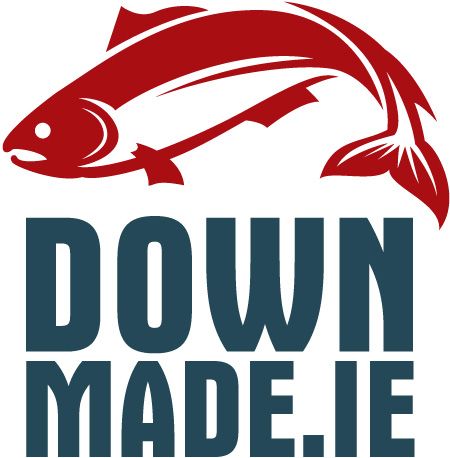Aeronaut couple Violet (1861 – 1940) and John Dunville (1866 – 1929) from County Down undertook numerous balloon flights before and after the First World War.
In 1892, John Dunville, from County Down, wed Violet Anne Blanche Lambart, a native of Beau Parc, County Meath. The Dunville family were wealthy from their prosperous whiskey and tea importing ventures and lived lavishly. Their primary residence was the expansive 70-room Redburn House in Holywood, County Down, complemented by another home in Portland Place, London.
Engaging in activities customary for the wealthy, the Dunvilles embraced the early 1900s trend of ballooning, with both Mr. and Mrs. Dunville being enthusiastic aeronauts.
In 1906, John Dunville took his first balloon flight at Aldershot, Hampshire, England, offered by the War Office for five pounds. Unfortunately, this inaugural flight, shared with an officer from the Army Balloon Corps, resulted in a torn balloon and both men having to climb down from a tree.
Unfazed, John Dunville persisted in his ballooning endeavours and in 1907 for £200 purchased a 50,000 cu.ft. balloon with Vere Ker-Seymer, and named it ‘La Mascotte,’ a term of endearment for his wife Violet. He began competing in earnest and in September 1907, he secured the Northcliffe Cup, granted for the longest flight of the year, spanning almost two hundred miles from London to Wales.
Competing in the Coupe Aéronautique Gordon Bennett in October 1908, Dunville claimed second place out of twenty-three balloons, covering a distance of two hundred and sixty-eight miles.
The Dunville’s achieved numerous “firsts” in balloon flights. In November 1908, John attempted to win the Northcliffe Cup with his new balloon ‘Banshee,’ flying 260 miles from London to Baelen, Belgium. Instead, they set a different record—the first English Channel crossing by a balloon carrying four people: John, his wife Violet, Charles Pollock and Philip Gardner.
Later, in December 1908, John Dunville did win the Northcliffe Cup by flying from Chelsea Gas Works to Crailsheim near Stuttgart, Germany in 13 hours, accompanied by Charles Pollock and Philip Gardner.
By 1910, John Dunville felt he had enough experience to undertake a longer and much risker open-water flight and on Tuesday, 15th February, a little after ten o’clock, accompanied by Charles Pollock, they slowly lifted off in the racing balloon ‘St. Louis’ from the Dublin Gas Company’s works in Barrow Street, Ringsend with the aim of becoming only the third balloon crew to fly the Irish Sea.
Named ‘St. Louis,’ his balloon was built in France and had previously been flown by Americans in the Coupe Aéronautique Gordon Bennett of 1907 and 1908. In the 1908 race, ‘St. Louis’ had crashed into the North Sea. The occupants were rescued and after the balloon drifted for days, it was eventually recovered by fishermen from Hull. Renovated at Short’s Battersea works, it was later purchased by John Dunville.
Coordinating the launch in Ringsend, Mr. E. Short, the St Louis restorer, informed the local press that the wind’s strength required forty men to secure the 85ft balloon on the ground. He explained that the balloon’s ascent relies on meticulous weighing to prevent a swift rise, avoiding potential collapse and rapid descent that would waste ballast. Adjusting the weight is essential to maintaining a low starting altitude. Despite the challenging conditions, the St. Louis launched successfully after an hour of adjustments, gradually reaching around 800 feet before proceeding over the hill of Howth and over the Irish Sea.
Dunville and Pollack were successful and became only the third balloon crew to cross the Irish Sea, crossing over the Welsh coast near Holyhead. By around three o’clock that afternoon, Dunville had skilfully landed the balloon at Birtles, near Macclesfield, England.
In a post-flight interview, John Dunville revealed that the five-hour journey spanned 160 miles and they reached altitudes of 10,000 feet, recording a temperature of -27 degrees.
Violet Dunville had intended to ride in the balloon, but the ballast had to be decreased before the launch. She said afterwards, ‘I knew I displaced three bags of ballast, which they would require to throw out, and you know they could not throw me out.’
Violet went on to make a name for herself in the Aeronaut world by piloting her own balloon Banshee II and winning several races, including the Hedges Butler Challenge Cup three years consecutively in 1912, 1913, and 1914. According to the rules, winning the cup three times entitled her to keep it. Yet, in line with the common practice of the time, Violet’s name was engraved on the cup as Mrs. John Dunville!
The Dunville’s raced or crewed on balloon races in England, Belgium, Germany, France.
Sources of Information & Photo Credits:
British Balloon Museum and Library
Dunville’s Whiskey
Fédération Aéronautique Internationale (Fai) – Coupe Aeronautique “Gordon Bennett”
National Library of Ireland
Sam Christie
Short Brothers Limited – Gordon Bruce
The Aldershot Aeronauts – Tim Childerhouse
The Dunville Family of Northern Ireland and Dunville’s Whiskey – Jill & Miles Holroyd
The Thompson family photographic collection


